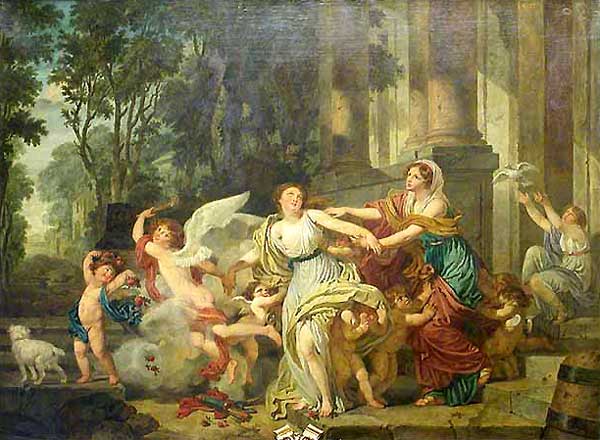
Louvre Museum Pass
Don’t take my word for it. The Smithsonian will tell you. It lists the Louvre Museum as one of the top 28 places in the world you need to go before you die (Smithsonian Magazine, January 2008).
Would people still go to the Louvre Museum - if the Mona Lisa, the Winged Victory of Samathrace and the Venus de Milo did not reside there? It would still be a great museum, but not quite as great.
Movie stars, singers, and a myriad of celebrities come and go. Our concept of talent and beauty tend to be as fickle as lap dancers, but Mona stays. So, this is why you must go to see Leonardo da Vinci’s Mona Lisa - at least once, in person. You may be disappointed. You may find her to be unattractive, but the old gal has staying power. She’s been around since the 1500s and that’s a hell of a track record. Of all his paintings, Leonardo chose to lug Mona along with him from Italy to King Francois I’s French court. Francois obviously liked the painting and kept it as the centerpiece of his collection. She’s been here ever since (except for one brief interlude of liberation when she was stolen not for money, but for love).
So, if you ever need any convincing about the importance of going to the Louvre, I hope this settles the issue. But there’s more, about 35,000 more reasons to visit the Louvre. This is the approximate number of works of art and artifacts that can be seen at the Louvre (the entire collection holds over 300,000 individual pieces) and its treasures are not limited to Western civilizations alone. You’ll find towering legacies to kingdoms long forgotten by Hollywood - the sculptures and freizework of ancient Assyria, Ninevah, Sargon and Khorsabah. Here is where you’ll find Hammarabi’s code (1792-1750 B.C.), and from Egypt, the Grand Sphinx.
History
Even if you chose never to set foot inside the museum, its walls alone are a living - and still evolving French history lesson. In recent years, excavations have unearthed some of the Louvre palace’s medieval foundations. In its earliest days (1200 A.D.), the Louvre existed as a castle built for defense (it was also much smaller than the building yo see today). Its medieval towers have long since been replaced by the more decorative and ornate facades of the Renaissance era when Francois I returned to this castle fortress which had been somewhat abandoned and left to ruin. Throughout French history, you’ll note how kings and rulers have had a curious love-hate relationship with Paris, having built great palaces, only to turn their backs on the city, fleeing for the serenity of the countryside. It’s what Parisians continue to do every weekend during the warmer months.
Before becoming a museum, the Louvre had several purposes. First, as I’ve mentioned it defended Paris from its position overlooking the Seine River. It didn’t actually become a residential palace until the 1300s during the reign of Charles V. Charles lived here but he also created a huge library in one of its towers. When Francois I moved in 150 years later, he decided to give the Louvre a totally new look. The facade took on the design of the day - borrowing the less austere, and much more ornate features of Italy’s burgeoning Renaissance style.
Still what you see on the facade of today’s Louvre, particularly in the Cour Caree (that’s the square enclosure of the Louvre which you can reach by walking past the pyramid and through the arches to the westernmost end of the the museum) retains only a small segment from Francois I’s era. Catherine de Medici added the wing facing the Seine River. Even though Louis XIV ended up spending most of his time at Versailles, he brought in a crew of architects and artists to work on the Louvre palace, from the inside out. Napoleon couldn’t resist adding an addition, followed by Napoleon III as late as the 19th century. And even 20th-century French presidents felt inclined to leave their fingerprint on the Louvre, witnessed by the IM Pei pyramid installed during President Francois Mitterand’s term. Is it possible that the Louvre as we know it today should have started with a Francois and ended its restorations with a Francois? Probably not. It is far too tempting a prospect to link one’s place in history to one of the most famous museums in the world.
Technorati Profile

